The Donnes: A Typical Brighton Family
The Donne family arrived in Brighton just as the town embarked on a building boom. Carpenter Joseph Donne and his wife Sarah moved from London with their children around 1806 and later set up home close to where St Peter’s Church would be built in 1824. The family would retain a strong connection with the new church for decades to come at a pivotal time in the city and the church’s growth.
The following information and images were submitted by Sarah Bell (neé Donne)
The Donnes: Builders, Bakers, Carpenters and Confectioners
In about 1806 Joseph Donne, a carpenter, and his wife Sarah Easthope came from London to Brighton with their four sons: Philip Joseph, George John, William and James.
The family first lived in Chesterfield Street, a rough part of the town despite its proximity to the Royal Pavilion and the Steyne.
Three more children were born in the years 1808-1813. Sarah, Charlotte and Richard were all baptised at St Nicholas, then the parish church.
Joseph prospered in Brighton and became a house agent and surveyor. In 1832, 1833, 1844 and probably in other years, Joseph was one of the 64 elected commissioners of the Brighton Improvement Commission, which ran the town from 1773 until it became a borough in 1854.
In 1820 Joseph bought land and a messuage (a dwelling with outbuildings), which he had built at York Place retaining number 15 as the family home. Living there, the family had a ringside seat as the building of St Peter’s progressed during the years 1824-28.
By then Joseph was working as a builder and had a yard and workshop at Trafalgar Court, directly behind York Place. We do not know whether Joseph or his eldest son Philip Joseph, then working as a carpenter, worked on the church site. The family remained at York Place for several decades and would have often heard the bells ringing from the nearby church.
Several generations of the Donne family were certainly baptised or married at St Peter’s, which in its early years served as a chapel of ease to St Nicholas. Its parish entries were sent to the mother church for insertion into their records and not always recorded separately. Given the church’s proximity to the Donne family homes in York Place, St George’s Street and Trafalgar Street, other family members are also likely to have been baptised or married at St Peter’s.
Next Generation
Joseph and Sarah’s eldest son, Philip Joseph, married Elizabeth Cheesman, the daughter of a carpenter. They had 11 children. Their daughter Jane was baptised at St Peter’s on 1 August 1841. By then the family were living at St George’s Street, now Pelham Street, where they lived for 14 years. Philip Joseph first worked as a carpenter and then a builder.
By 1848 the family were living at 8 Trafalgar Street. Philip Joseph was working as a surveyor and house agent, as well as a builder. In December 1854 Phillip Joseph, now widowed, took out a lease on 11 York Place, a few doors away from his sister Charlotte, opposite St Peter’s. He died at York Place in 1855, but no record of his burial service has been found.
Jane’s elder brother George, first a grocer at 25 Trafalgar Street, then a builder at 11 York Place, died there of peritonitis in 1859. Jane died aged 20 of tuberculosis (consumption) at 11 York Place in 1861. There is no record of her funeral service. She had witnessed her mother and sister die of bronchitis in 1850, and seen six of her siblings die of consumption. Jane’s sister Rebecca (19) died of the disease the following year at York Place.
At the time there was no cure for tuberculosis, and it was one of the biggest causes of death. All 11 siblings died between the ages of 18 and 31 in the years 1842-1866. Jane and her sisters were educated at home and none of them married possibly because of their illness. The last to die was William, a builder, who died of consumption at York Place in 1866. His widow Isabella died of the disease in 1875.
Brighton to London and Back
Joseph and Sarah’s second son, George, went to London in the 1820’s where he worked as a carver and guilder and later a successful looking-glass manufacturer. He married Mary Cherry.
Their third son, William, started off as a builder and carpenter in Brighton but by 1841 he too was living in London with his wife Philus/Philadelphia and their two children.
Joseph and Sarah’s youngest son Richard, a painter and grainer (someone who painted surfaces to look like timber or marble), also went to London where he married Brighton-born Harriett Hills in 1841. Their daughter, Harriett Eliza was born in Hoxton on 14 May 1842. Just over five weeks later, Richard died of epilepsy.
Harriet was baptised at St Peter’s on 1 October 1843, when she was 18 months old. The service was conducted by Reverand Thomas Cooke, the perpetual curate at the church from 1828-1872. By then Harriett and her mother were living with Joseph, now a widower, and his surviving daughter Charlotte at 15 York Place.
Following Joseph’s death from ‘decay of nature’ in 1847, Charlotte and the two Harrietts remained at York Place before moving to Hove around 1859. Despite it no longer being her local church, Harriet Eliza married Alfred George Avenell, a tailor, on 28 January 1874 at St Peter’s, perhaps indicating her emotional tie to the church she lived opposite as a child.
Bakers
In 1829 Sarah and Joseph’s fourth son James married Elizabeth Nye, the daughter of a miller. The couple had four sons, three of whom became bakers, and a daughter Elizabeth.
Elizabeth was baptised on 14 August 1836 by Rev. Cooke at St Peter’s. At the time of her birth the family were living at Rose Hill North, not far from the church, and James was working as a cabinet maker. Later he worked as a miller at Bear Mill, then as a paper hanger, and in his later years as a rent collector and house agent. Elizabeth died in 1853.
James and Elizabeth’s oldest son James was a baker in George Street, Kemp Town, and married Maria Lillywhite, the daughter of a gardener, in 1855. In 1851 she was working as a cook at Rock Gardens. Their eldest daughter Maria was baptised at St Peter’s on 11 April 1858 and their second daughter Charlotte Louise was baptised there on 11 August 1861. Charlotte became a pastry cook and her brothers, James and William Joseph, master confectioners.
Richard, James and Elizabeth’s second son, was a baker and pastry cook at 13 Kensington Gardens in the North Laine. He married Martha Streete, the daughter of a gas inspector, in 1855. All of the couple’s nine children were baptised at St Peter’s, starting with Martha Elizabeth on 16 October 1856 and ending with Joseph Victor’s baptism on 25 May 1873. That year St Peter’s had become the parish church of Brighton. Joseph was not yet two when his father died aged 42 in March 1875 leaving Martha with eight children under 18. Martha then married Charles Clayton at St Peter’s on 6 August 1878. He was a widowed artist living at 19 Kensington Gardens. He died in 1881.
Richard and Martha’s daughter Rosina married George Sayers Johnson, a furniture dealer, at St Peter’s on 12 August 1883. In the 1881 census Rosina was living with Martha, recently widowed again, at 13 Kensington Gardens and working as a shop assistant in the family bakery run by her mother.
Richard and James’s youngest brother George was a baker, confectioner and pastry cook at 61 West Street Brighton. By 1901 he was living in London with his wife Sarah still working as a baker. The fourth brother Joseph went to London in about 1846 to work for his uncle, George, the guilder and looking-glass manufacturer.
After his first wife Elizabeth had died, James Donne, father of the four brothers, married Mary Ann Taylor, a servant, and the daughter of a shoemaker. It was to be many years before the couple had children. On 12 April 1857 their daughter Mary Ann was baptised at St Peter’s. The family were then living at St Peter’s Street not far from the church. A son, born in 1858, died soon after birth. James died aged 67 at home in Milton Road in 1872.
James and Mary Ann’s daughter, Mary Ann, married Weston John Creed at St Peter’s on 13 June 1881. At the time of her marriage, Mary Anne was a dressmaker living with her widowed mother, a laundress, at 5 Bentham Street, off Elm Grove. Weston was a boarder there. One of the witnesses was Charles Hide, a shop porter who also lived at that address with his wife and young children. Weston was recorded as a house painter in the census in April 1881 but as an upholsterer on his marriage certificate.
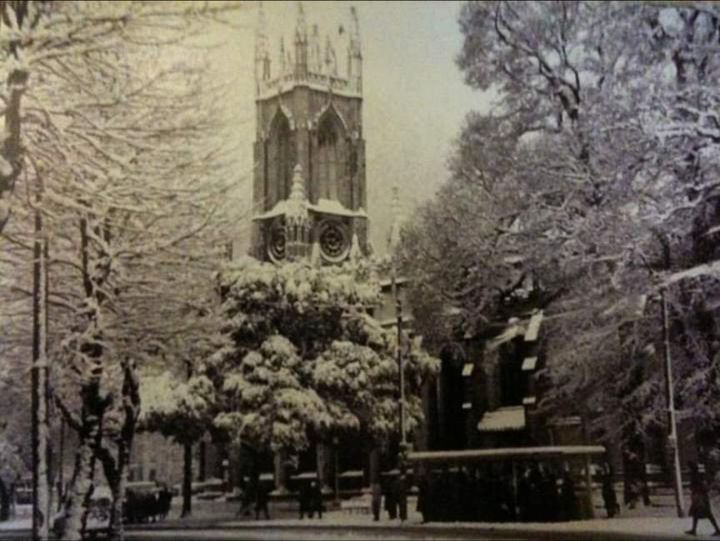
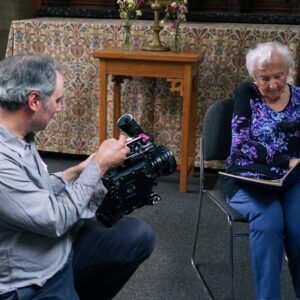
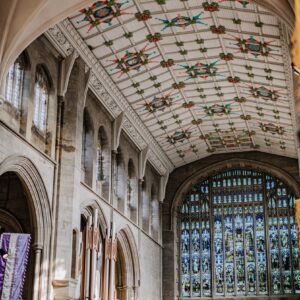

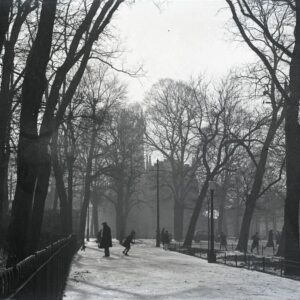
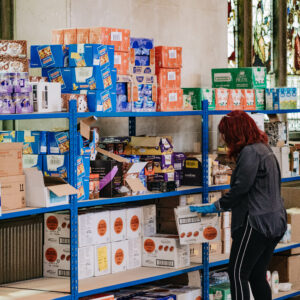


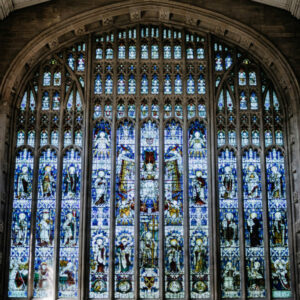




‘This project is kindly funded by Historic England as part of the Everyday Heritage - Working Class Histories. We are grateful to them for this funding.’